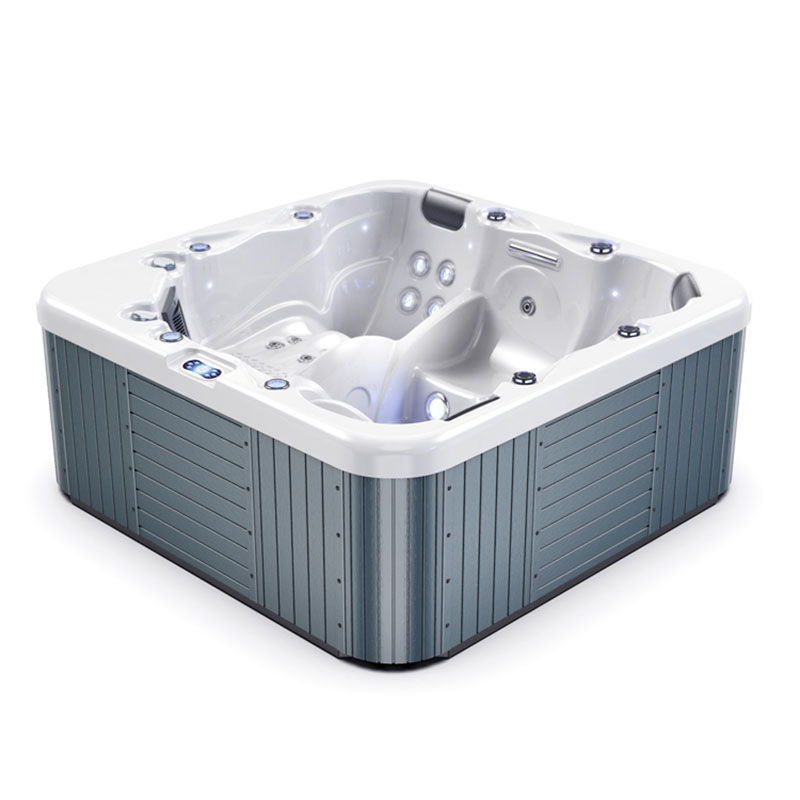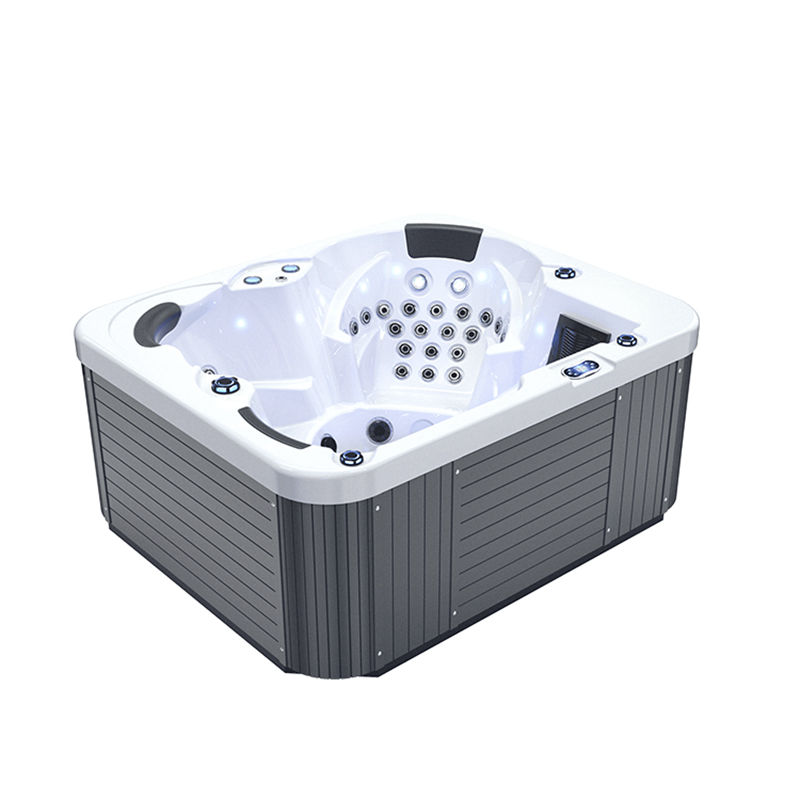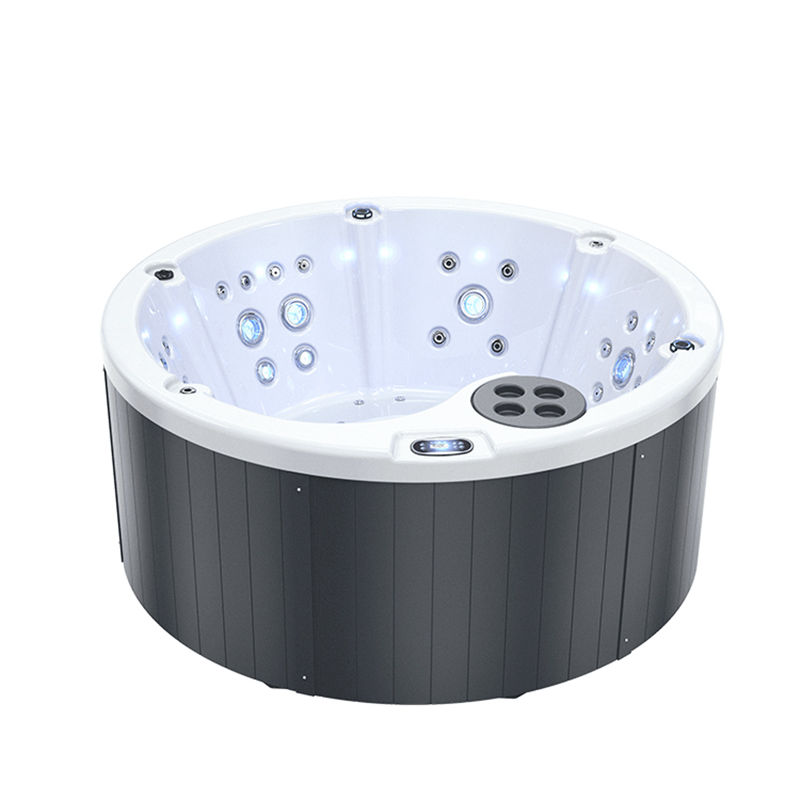Outdoor spa hot tubs are becoming increasingly popular as a place to relax and unwind. However, outdoor spa hot tub maintenance requires careful attention, especially to the chemical components of the water, including stabilizers. Stabilizers, mainly cyanuric acid, are chemicals commonly used in outdoor spa hot tubs to help protect disinfectants (such as chlorine) from being broken down by ultraviolet rays, prolonging their sterilization effectiveness.
However, in actual maintenance, the problem of excessive levels of stabilizers often occurs. This article will delve into the causes of excessive levels of stabilizers in outdoor spa hot tubs and explain how to avoid these problems.
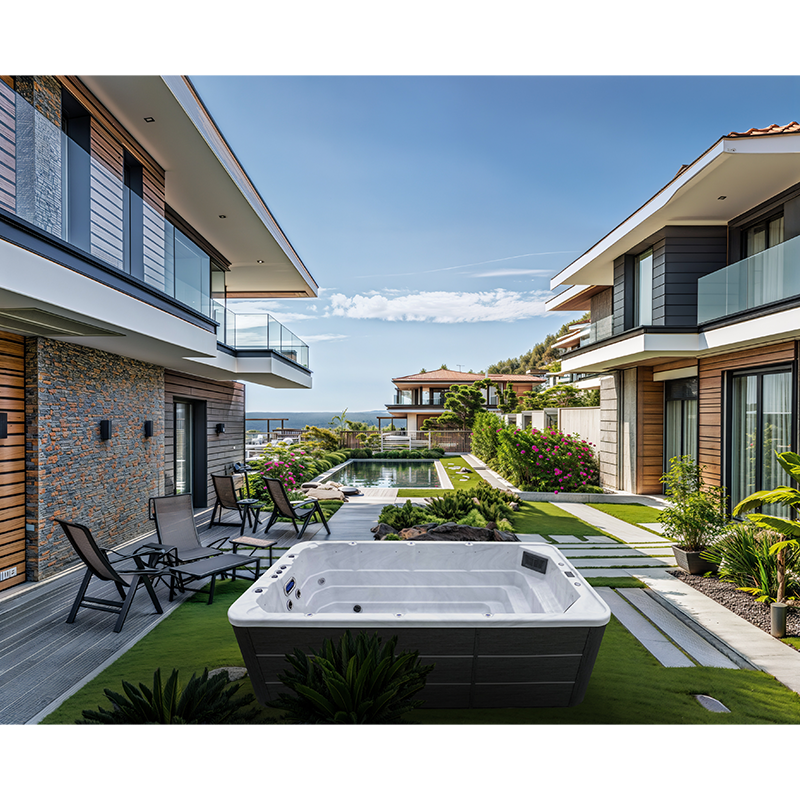
What are stabilizers and what do they do?
Before we delve into the causes of the problem, we first need to understand the role of stabilizers in outdoor spa hot tubs. Cyanuric acid, as the main stabilizer component, can form a protective barrier to prevent disinfectants such as chlorine or bromine from quickly breaking down under the ultraviolet rays of the sun. This is especially important for outdoor spa hot tubs, which are often exposed to sunlight. Without the protection of stabilizers, the decomposition rate of chlorine will be greatly accelerated, resulting in poor disinfection effect and even spa hot tub water quality problems.
The ideal cyanuric acid level in outdoor spa hot tubs is usually maintained between 30 and 50 ppm. However, once the cyanuric acid level is too high, it will not only not continue to enhance the disinfection effect, but will inhibit the disinfection ability of chlorine, making it difficult to control microorganisms in the water and even making the water unhealthy. Therefore, it is crucial to maintain the appropriate stabilizer level.
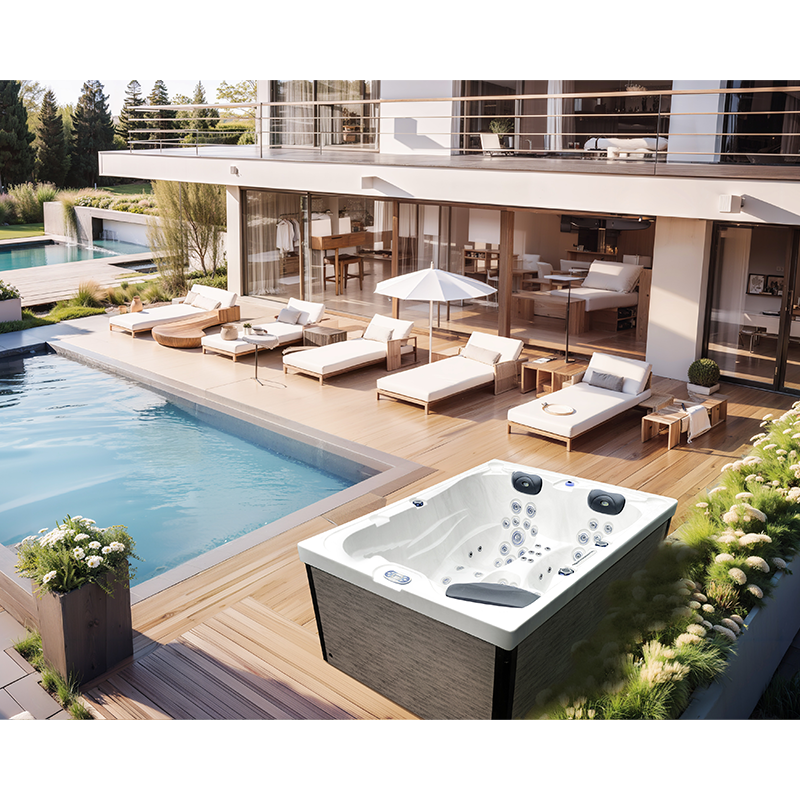
What are the main reasons for excessive stabilizer levels in outdoor spa hot tubs?
In actual use, excessive stabilizer levels are more common, mainly due to the following reasons:
Excessive use of stabilizer products
One of the most common reasons is the addition of too many disinfectant products containing stabilizers. Many chlorine products on the market, such as trichloroisocyanuric acid (Trichlor) and dichloroisocyanuric acid (Dichlor), already contain cyanuric acid. When these products are used, they not only provide chlorine disinfection effects, but also continue to increase the cyanuric acid content in the water. For those who don’t regularly test the quality of their outdoor spa hot tub water, it’s easy to keep adding chlorine because they don’t see a short-term problem, which can lead to excessive cyanuric acid accumulation.
● Trichloroisocyanuric acid (Trichlor): This is a common chlorine product containing cyanuric acid, mainly used in swimming pools and outdoor spa hot tubs. It contains about 90% chlorine and about 50% cyanuric acid. If you’re not careful, frequent use of this product can quickly increase the cyanuric acid level in the water.
● Dichloroisocyanuric acid (Dichlor): Another common chlorine product, it contains about 56% chlorine and about 40% cyanuric acid. Although this product dissolves quickly and is easy to use, it can still cause cyanuric acid levels to rise quickly if the dosage is not properly controlled.
Many users don’t realize the dual role of these chlorine products containing cyanuric acid when using them. Each time chlorine is added, the level of stabilizer will also increase simultaneously, which will cause cyanuric acid levels to gradually accumulate and eventually exceed the reasonable range.
Lack of regular water quality changes
Outdoor spa hot tubs usually have a small water volume and are more sensitive to changes in the concentration of disinfectants and stabilizers. If the water is not changed for a long time, the chemicals in the water will gradually accumulate, resulting in higher and higher levels of stabilizers. Each time new chlorine is added, the cyanuric acid content will increase, and the cyanuric acid in the water will not naturally degrade or evaporate, and its concentration must be reduced by changing the outdoor spa hot tub water.
Some users are accustomed to using the same pool water for a long time, and only maintain the water quality by adding disinfectants and chemicals, ignoring the importance of regular water changes. Long-term water changes will cause the concentration of cyanuric acid to be too high, which will affect the effectiveness of disinfectants.
Over-reliance on automatic dosing devices
Many modern outdoor spa hot tubs are equipped with automatic dosing devices. These devices regularly add chlorine or other disinfectants through a set program to ensure that the spa hot tub water quality is always clean. However, if these devices are not set up properly or chlorine products containing cyanuric acid are used, it may lead to a continuous increase in cyanuric acid.
When the automatic doser adds a product containing cyanuric acid each time, although it can maintain the chlorine level in the water, each addition is accompanied by the accumulation of cyanuric acid. If the outdoor spa hot tub water quality is not regularly tested and the dosage ratio is adjusted or different types of disinfectants are used, the cyanuric acid content will eventually be too high.

Overexposure to sunlight
Although the main function of the stabilizer is to prevent ultraviolet rays from decomposing the chlorine, overexposure of the spa hot tub to sunlight can also be an indirect cause of excessive cyanuric acid accumulation. Because when users find that the chlorine in the water is rapidly depleted, they often maintain the outdoor spa hot tub water quality by frequently adding chlorine products (including disinfectants containing cyanuric acid). However, although this practice temporarily solves the problem of insufficient chlorine, it will continue to increase the cyanuric acid content in the water.
Especially in an environment where the spa hot tub is exposed to direct sunlight, users tend to over-rely on chlorine and ignore the monitoring of the stabilizer content, resulting in excessive cyanuric acid during long-term use.
Misunderstanding that stabilizers can be increased indefinitely
Some users mistakenly believe that the more stabilizers in the spa hot tub, the better, which can provide longer-term protection for chlorine. In fact, the role of cyanuric acid is limited. Too much stabilizer will not only not enhance the effectiveness of chlorine, but will inhibit its disinfection effect. Once the cyanuric acid content in the outdoor spa hot tub water exceeds 50 ppm, the bactericidal effect of chlorine will be greatly reduced.
Therefore, some users do not clearly know the upper limit of the use of stabilizers when maintaining outdoor spa hot tubs, and repeatedly add products containing cyanuric acid, which eventually leads to excessive content.

How to detect and manage the stabilizer content?
Since excessive cyanuric acid content will affect the water quality of spa hot tubs, it is crucial to regularly detect and manage its content. The following are effective ways to control the stabilizer content in outdoor spa hot tubs:
Regularly test the cyanuric acid content
The simplest management method is to regularly test the cyanuric acid content in the water. Water quality testing tools can detect chlorine, pH, alkalinity and cyanuric acid content to help users understand the water quality of outdoor spa hot tubs. It is usually recommended to test once a week, and if chlorine products containing cyanuric acid are used, it should be tested more frequently.
There are many portable water quality testing tools on the market, such as test strips and electronic testers. They are easy to use and can quickly determine the content of various chemicals in outdoor spa hot tub water.
Avoid using chlorides with stabilizers
If the cyanuric acid content in the water is already high, or to avoid excessive accumulation of cyanuric acid, users can choose chlorides without stabilizers, such as sodium hypochlorite (liquid chlorine) or calcium hypochlorite, which will not increase the cyanuric acid content in the water.
By properly selecting disinfection products, the accumulation of cyanuric acid can be effectively controlled. At the same time, spa hot tubs still need to maintain appropriate additions of disinfectants under high sunlight exposure to prevent microbial growth.
Regular water changes
As mentioned earlier, cyanuric acid will not disappear naturally, so regularly changing the water in the outdoor spa hot tub is the most direct way to avoid excessive cyanuric acid levels. It is generally recommended to completely change the water in the spa hot tub every 3 to 4 months to avoid the accumulation of chemicals. If it is found that the cyanuric acid content has exceeded the ideal range, it can be replaced partially to reduce its concentration.
Manually control the amount of dosing
For users equipped with automatic dosing devices, it is recommended to manually monitor and adjust the dosing ratio regularly, especially when the dosing device uses products containing stabilizers. Avoid the accumulation of cyanuric acid by controlling the amount of disinfectant added. At the same time, manual testing of outdoor spa hot tub water quality can also ensure the normal operation of the dosing device and avoid excessive dosing caused by equipment failure.
Can Lovia Spa handle large wholesale orders for international buyers?
Absolutely! Lovia Spa has a monthly production capacity of over 1,200 units, allowing us to fulfill large-scale wholesale orders for international buyers. Whether you are a retailer, distributor, or business owner, we offer competitive wholesale prices, bulk discounts, and factory-direct pricing. Our spa hot tubs come with full certifications such as CE, ETL, ISO9001, and more. Contact us today for bulk purchasing quotes and enjoy our special promotions.


